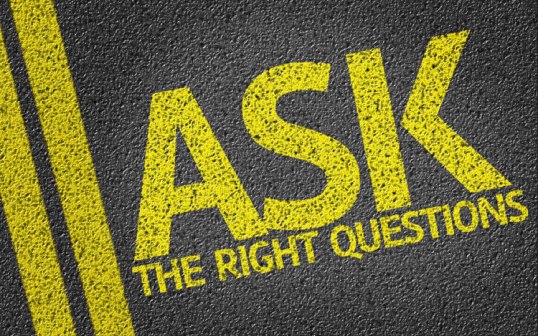Our branding, marketing, and design industry have no regulatory body. Anyone can start providing branding or marketing services without any certification or license. In fields like law and engineering, it’s a different story entirely. That means lots of marketing firms or agencies can spring up overnight. The services offered in this industry are also intangible. This is why many of the terminologies being used can be misleading and confusing at times. When you do research online for the meaning of “brand strategy” or “brand essence,” you’ll be confronted with a host of definitions. Occasionally, you may stumble on some themes, but lots of subjectivity exists in this industry.
As you narrow down to what makes a marketing or brand campaign, it only gets more complicated. You will find creative professionals emphasising the need for a precise value, mission, vision, “constructing your story perfectly;” oblivious to the fact that their listeners have no idea of what they are talking about. Sometimes, these terms have no specific meaning. Telling a brand’s story often depends on the product or service being pushed. Video production experts maintain that video should be used to tell your story, while designers may agree that it should be a collection of specific touch points.
Marketing and Branding Firms Should be flexible
Agreed, brand strategies, PR, marketing, communications, and other services like these are seen as intangible. Sometimes, even the most direct solutions can still get people confused. Perhaps this is why many small businesses don’t even live by their vision and mission, and even the leadership is often unaware of their existence. We believe branding and marketing should incorporate simplicity. Eventually, you should engage the services of people who can help them with specific tasks, and the end result should be clear.
But first, let’s explain the meaning of the essential terms in the marketing and branding industry. We are all familiar with the origin of the term “brand.” Farmers used to burn visible marks on their animals as a stamp to indicate it’s theirs. They referred to that as their “brand.” In today’s corporate and marketing concept, a brand is a company’s consistent identifiers.
A logo is only a tiny way of giving people an impression of your business and brand
Customers expect certain things based on consistent traits. These traits may include textures, aroma, and sounds from a coffee shop. It may sometimes include the visual elements and verbiage in corporate channels such as press releases, websites, and printed collateral. Lots of people relate more to the former. Often, when people hear the word “brand,” their minds go to the logo design. While this is in line with the term’s history, a logo is only a little way of giving people an impression of your business and brand. Let’s define the key terms.
Brand:
Those unique traits that set your company apart and determine people’s impression of your business.
Branding:
The effort that goes into enhancing that impression through communications, marketing, and design.
Brand Identity:
These are unique traits such as colours, marks, typography, names, and consistent design features.
Brand Goals:
These are Projected, measurable objectives for the company’s brand.
Tactic:
An activity or task that is carried out as part of a strategy.
Brand Strategy:
A communication-focused action plan aimed at achieving a core brand objective.
Brand Essence:
The most straightforward phrase or word that summarises your company’s personality, purpose and character.
Brand Voice:
The tone and style used in branded content.
Brand Positioning:
Your position in the consumer’s mind or marketplace.
Strategy and Serviettes
One of the terms that seem to get defined in different ways is “strategy.” Our years of working in change management and marketing means we’ve encountered any length one can think of, such as huge binders with more formatting than necessary. The best strategies are the ones that are short enough to be represented on a serviette. If you can’t summarise it in a way that an average Joe easily understands it, then you may struggle to get your team’s backing. Brand strategy is about simplicity. Mention your objective, how you plan to achieve them, and highlight first-class tactics. Here’s an illustration: we have a rapid transit bus line that links Sydney city to the Northern Beaches area known as the B Line. Our brand strategy will look like this.
GOAL: Head up to Palm Beach
STRATEGY: Use the B Line
TACTIC: Purchase a bus ticket from the newsagent
TACTIC: Wait patiently for the bus
TACTIC: Board the bus and stop at Palm Beach
You can achieve a similar level of simplicity for your brand, too. Let’s repeat this for Book Keeper
GOAL: Bring in a more regular general booking service
STRATEGY: Deliver a “Never Miss a BAS” message
TACTIC: Aggressively advertise the NMBAS advantage
TACTIC: After service, offer NMBAS savings opportunity
TACTIC: Ensure all materials are branded “the NMBAS guys.”
Lots of activity needs to be implemented, but the brand strategy serves as a guide. A super-lengthy strategy (if it gets read) may not provide the same help as a well-summarised strategy. If a team knows that there’s already a clear goal and strategy in place, every other task becomes easy and only comes down to execution.
While developing a brand strategy, you can learn from a few points of view. Let’s refer to them as brand inputs. First, it’s crucial for the team to agree on the brand objectives, but also to know the assumptions about your brand on which your team operates during communications with customers. That said, more important is figuring out your position and competitors in the marketplace. Perhaps most fundamentally, you’ll need to understand the prospective customer’s point of view of about your brand or business. That means to get the correct picture, you have to dig and research each of these inputs.
Stakeholders
This is simply you. These people work hard to protect the brand’s success. This may include business executives, key members of your team, and board members. Every employee automatically becomes the brand’s ambassador, and this means they are a stakeholder. They are interested in the success of the company. Stakeholders have more knowledge of the brand than anyone else, and they believe no one knows the customer better than them. But the truth is they may not have a clear vision of the trees due to their closeness to the forest.
Audiences
The audience is the individual, group or company whom you are trying to reach with your brand marketing and communications. This includes influencers, customers, internal audience, to mention a few. Figuring out the motivation of your target customers helps to strike a balance between their goals and yours. For instance, a fast food outlet aims to offer high-volume service, and they want to do it quickly. A parent taking her child to the amusement park wants a quick meal while still arriving at the park on time. While they seem to have two separate goals, they align. This tells the fast food outlet how to approach their services and what message to deliver in their brand marketing to fulfil the needs of their customers while reaching their business objective.
Marketplace
The marketplace is full of common themes, risks, competition and opportunities. Lots of companies say they have excellent customer service, excellent quality, amazing people, and many others claim to be innovative. These aren’t differentiators. To develop a winning message, you’ll have to stand out in the marketplace to make an impact. By studying the competition, observing common themes, and paying attention to market trends, you can identify the differences and commonalities. We note things such as marketing approach, voice, common colours, and language.
These brand inputs can help you formulate a message that targets an outcome that points toward the stakeholders’ goal, in the voice of the audience’ and distinctive in the marketplace.
Branding needs proactive action
Always see your brand as some sort of “feeling.” It shows what prospects believe about your company – everything that makes up your identity. Branding is a conscious and proactive effort to improve that feeling, and it requires consistent action. It means you need to always communicate your promise, positioning and brand message to your prospective customers. You might call that marketing. Marketing is a tool that helps convey your message to your audience so they can take informed action.
Do you need help with your branding?
If you want us to assist you with your marketing and branding strategy, get in touch with us today.









